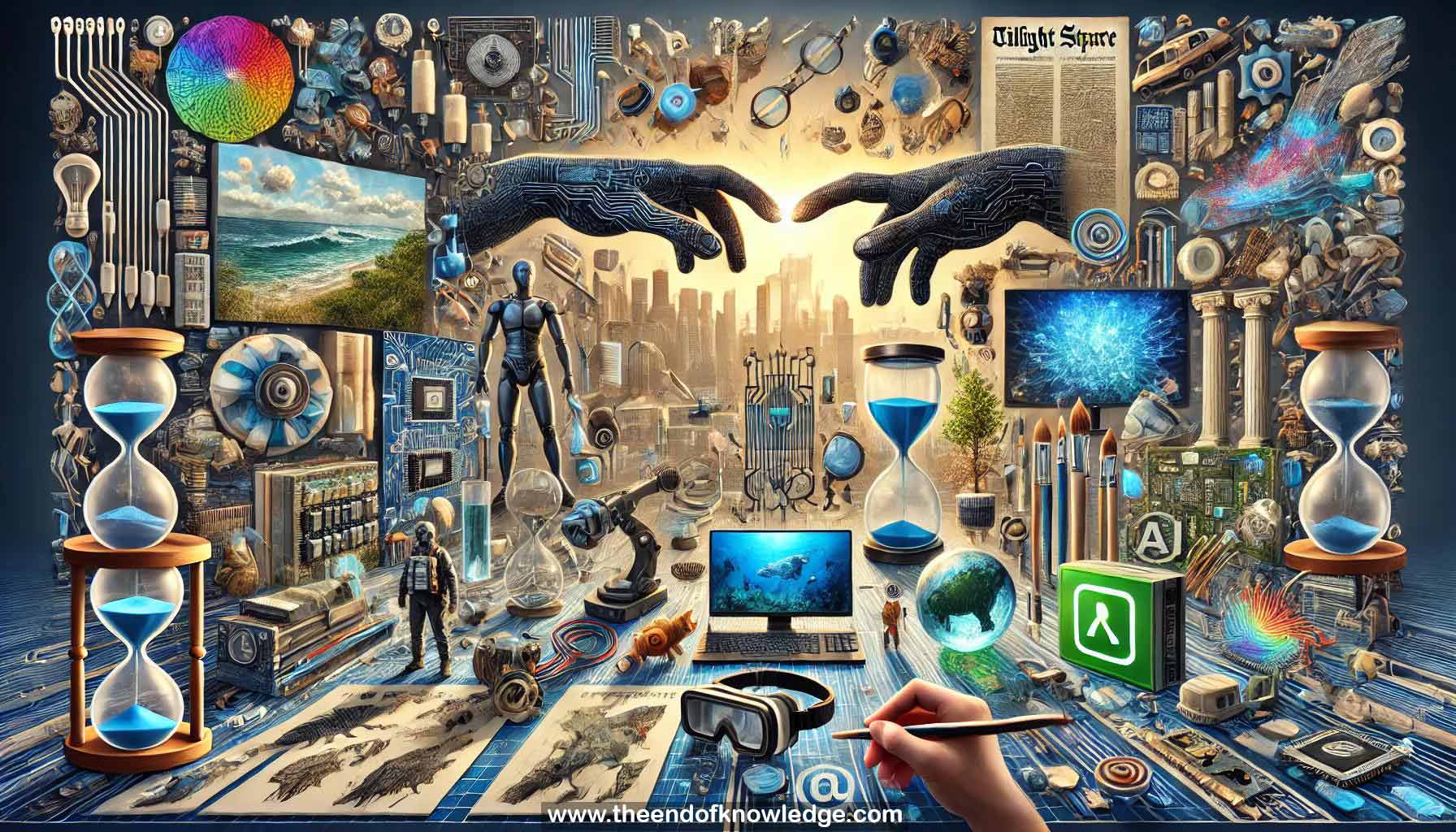 >
>
Concept Graph & Resume using Claude 3 Opus | Chat GPT4o | Llama 3:
Resume:
1.- Artistic practice with technology: Using AI and other tech tools to create art, without necessarily demonstrating technical aspects.
2.- Human intention in AI art: Emphasizing that humans, not computers, are the creators of AI-generated art.
3.- Microscope as inspiration: Early exposure to microscopes influenced the artist's perception of patterns and structures in nature.
4.- Neural networks as pattern extractors: AI viewed as a tool to see and extract patterns invisible to the naked eye.
5.- Neural Zoo series: Project combining marine life datasets with AI to create new, imaginary creatures.
6.- 3D creature generation: Evolution of 2D AI-generated creatures into 3D models using GAN interpolations and 3D style transfer.
7.- Historical inspiration: Drawing from traditional artistic practices of combining and reimagining species, like medieval bestiaries.
8.- Cyanotype printing: Incorporating traditional photographic techniques with AI-generated images to create unique artworks.
9.- Temporally Uncaptured series: Animating cyanotype prints to represent the motion of microscopic life.
10.- Diving and data collection: Personally gathering underwater imagery for datasets, emphasizing connection to subject matter.
11.- Virtual ocean space: Collaboration to create immersive experiences combining visual and audio elements of marine environments.
12.- Incomplete natural world data: Exploring how incomplete or distorted data affects our understanding and representation of nature.
13.- Critically Extant series: Highlighting limitations of AI by generating inaccurate depictions of endangered species using incomplete data.
14.- Public art installations: Showcasing AI-generated art in public spaces like Times Square to reach wider audiences.
15.- Casa Batlló projection: Creating a site-specific AI artwork for Gaudí's architectural masterpiece, integrating with its organic forms.
16.- Ocean visualization: Collaborating with scientists to visualize oceanic data, such as surface temperatures and currents.
17.- Mesopelagic zone exploration: Artistic interpretation of the ocean's "twilight zone" and its importance in carbon sequestration.
18.- Marine snow visualization: Artistically representing the often-overlooked phenomenon of organic matter falling through ocean layers.
19.- Collaborative scientific art: Working closely with researchers to create accurate yet artistic representations of scientific concepts.
20.- Resource consciousness: Addressing concerns about computational resources used in AI art creation.
21.- Artist consent in AI training: Discussing the ethics of using artists' work to train AI models without permission.
22.- Physical art objects: Exploring the creation of tangible artworks to complement digital pieces.
23.- Ugly art: Embracing less aesthetically pleasing subjects to convey important scientific or environmental messages.
24.- Funding challenges: Addressing difficulties in securing support for less conventionally attractive or marketable art projects.
25.- Veteran vs. newcomer perspectives: Reflecting on the rapid evolution of AI art and the artist's position within the field.
26.- Opting out of AI training: Mentioning tools and discussions around artists' control over their work in AI datasets.
27.- Defining "good art": Exploring the subjective nature of art evaluation and the role of curators and society.
28.- Imposter syndrome: Discussing feelings of inadequacy when working across disciplines, particularly without formal technical training.
29.- Accessibility of technical knowledge: Addressing the need for more artist-friendly explanations of complex AI and computer vision concepts.
30.- Learning resources for artists: Recommending workshops and online materials to help artists understand and utilize AI tools.
Knowledge Vault built byDavid Vivancos 2024